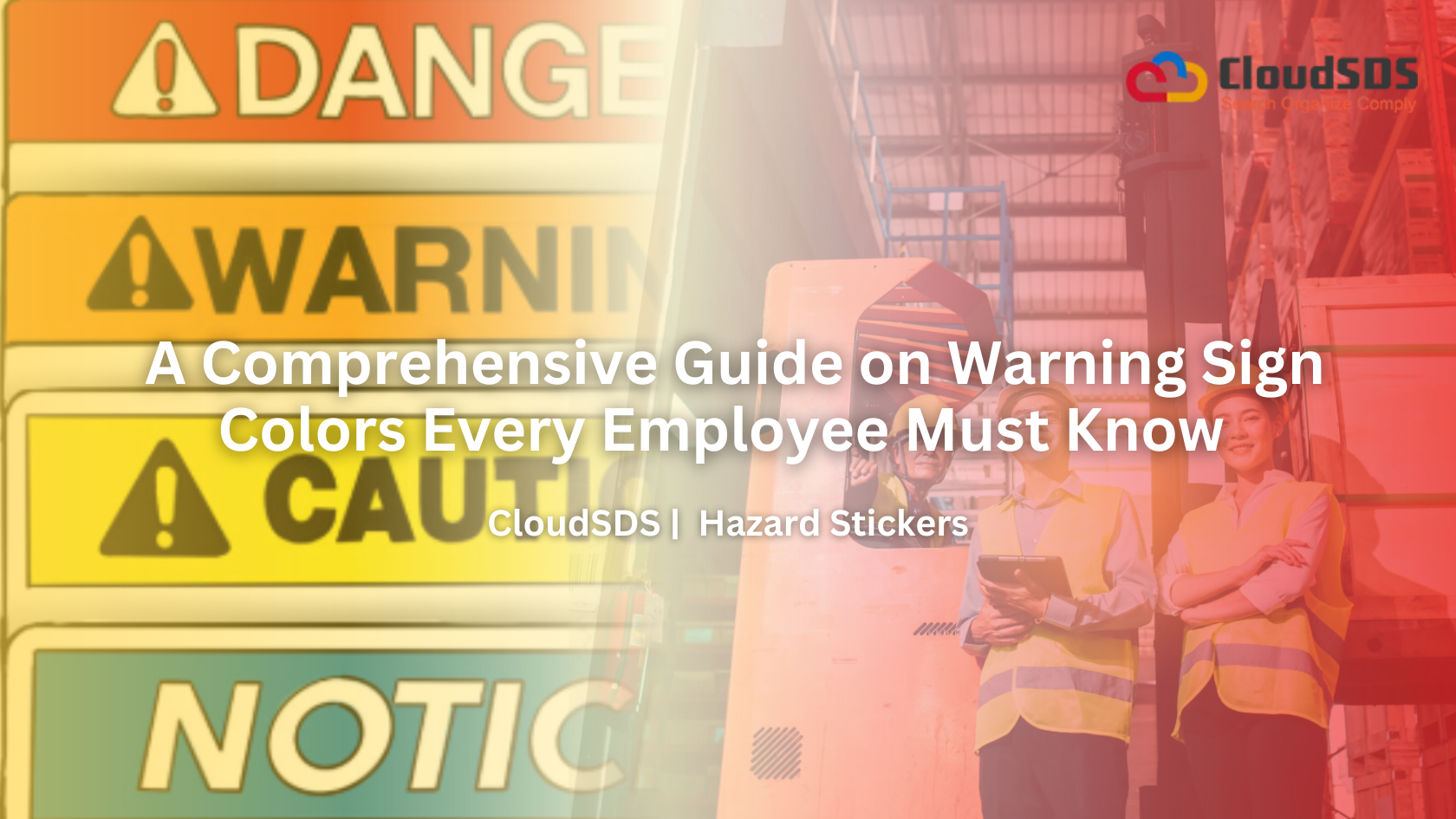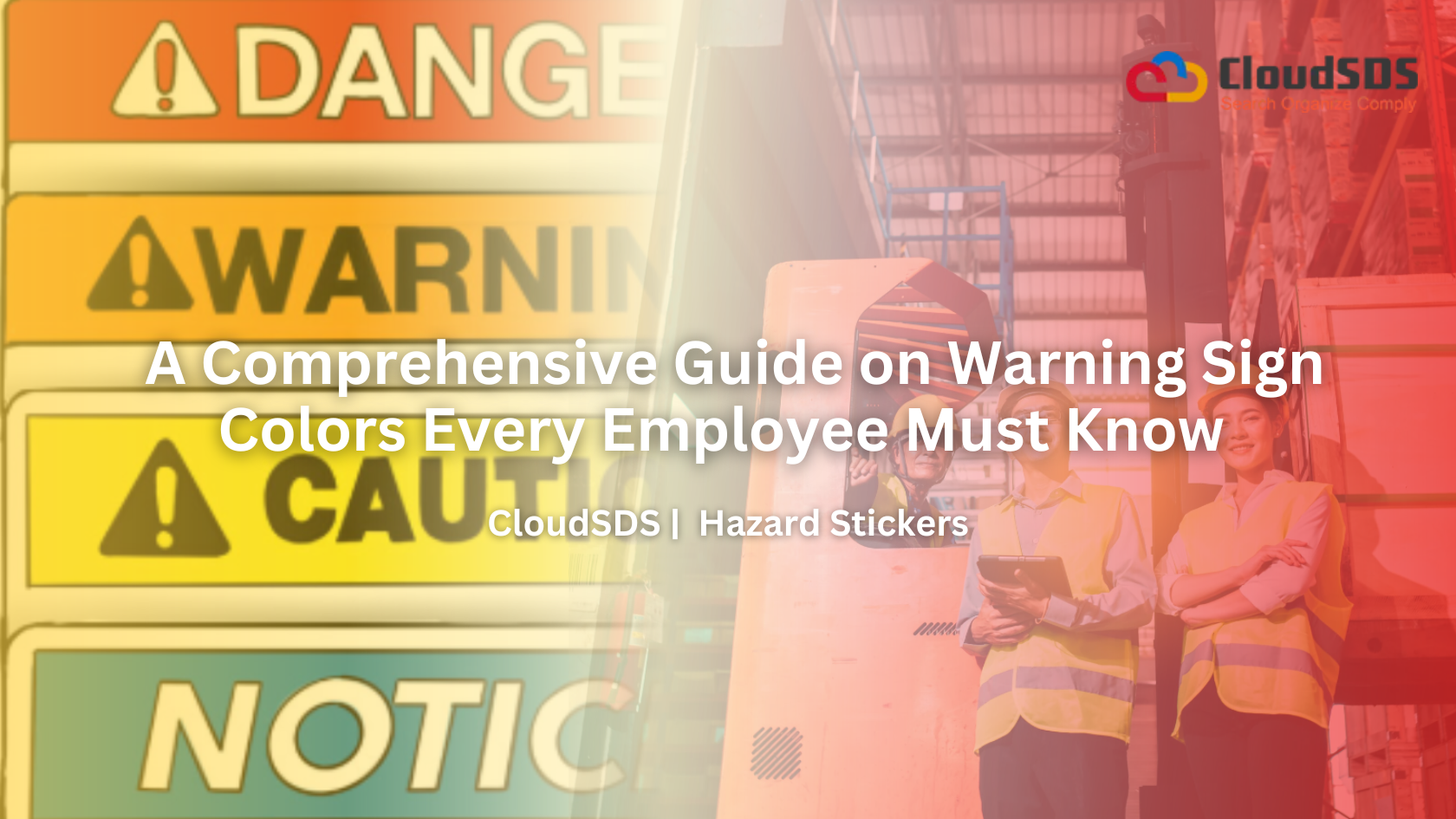In the US workplaces, safety color codes serve as a universal language that transcends barriers of education, experience, and spoken language. These standardized colors provide instant visual communication about hazards, safety equipment locations, and required actions, making them essential knowledge for every employee. Understanding these color codes can mean the difference between a safe workday and a potentially life-threatening accident.
The Foundation: OSHA and ANSI Standards
The Occupational Safety and Health Administration (OSHA) and the American National Standards Institute (ANSI) have established comprehensive color-coding systems that standardize safety communication across American workplaces. OSHA’s regulations, particularly Section 1910.144 and 1910.145, mandate specific color requirements for marking physical hazards and safety equipment. Meanwhile, ANSI Z535.1 provides detailed specifications for safety colors used in signs, labels, and workplace markings.
These standards ensure consistency across industries, allowing workers to quickly recognize hazards and safety information regardless of their specific workplace. The color-coding system is designed to register in the brain before words can be mentally processed, improving response time and decreasing the likelihood of incidents.
Critical Safety Colors and Their Meanings
🔴Red: Immediate Danger and Fire Safety
Red represents the highest level of hazard and demands immediate attention. This color indicates situations where death or serious injury will occur if the hazardous situation is not avoided. OSHA mandates red for several critical applications:
- Fire Protection Equipment: All fire protection apparatus, including extinguishers, alarms, and sprinkler systems, must be identified with red. Fire safety equipment locations are marked in red to ensure quick identification during emergencies.
- Emergency Stop Controls: Stop bars on hazardous machines, emergency stop buttons, and electrical switches used for emergency stopping must be red. This includes equipment like rubber mills, wire blocks, and flat work ironers.
- Danger Signs: Any sign indicating immediate life-threatening hazards uses red as the primary color, with contrasting lettering (typically white) for maximum visibility.
🟠Orange: Warning of Moderate Hazards
Orange indicates a potentially hazardous situation where death or serious injury could occur if proper precautions are not taken. This color is specifically used for:
- Machine Hazards: Orange marks dangerous parts of machinery that can cut, crush, shock, or injure workers. This includes exposed moving parts, electrical hazards, and equipment with low clearance levels.
- Construction Zones: Work zones and road construction areas use orange to alert workers and visitors to potential hazards.
- Warning Signs: Orange safety signs convey warnings about risks that may not be as severe or immediate as red danger signs but still require caution.
🟡Yellow: Caution and Physical Hazards
Yellow serves as the universal caution color, alerting individuals to potential risks that could lead to minor injuries if not approached carefully. Common applications include:
- Physical Hazard Warnings: Yellow marks in areas where workers might face risks of striking against objects, falling, tripping, slipping, or getting caught between moving parts.
- Wet Floor Signs: One of the most recognizable applications, yellow caution signs warn of slippery surfaces.
- PPE Reminders: Yellow signs often remind workers to wear required personal protective equipment.
- Material Handling Equipment: Yellow is commonly used on forklifts, cranes, and other material handling equipment to increase visibility.
🔵Blue: Mandatory Instructions and Information
Blue safety signs indicate mandatory actions that must be followed to comply with health and safety requirements. These signs feature white pictograms on blue backgrounds and are used for:
- Personal Protective Equipment Requirements: Blue signs mandate the use of safety equipment like hard hats, safety glasses, hearing protection, and steel-toed boots.
- Mandatory Procedures: Instructions that must be followed for safety compliance, such as “Authorized Personnel Only” or specific operational procedures.
- Out-of-Service Equipment: Blue is restricted to marking equipment that should not be used or operated.
🟢Green: Safety Information and Emergency Equipment
Green represents safety-related information and indicates locations where help or safety can be found. This color is reserved for:
- Emergency Exits: Green signs mark emergency escape routes and exit doors, following international standards that recognize green as the universal color for safety.
- First Aid Equipment: The location of first aid kits, eyewash stations, medical equipment, and emergency showers are marked with green.
- Safety Instructions: General safety information and procedures that promote safe practices using green coloring.
🟣Purple: Radiation Hazards
Purple (along with magenta) is specifically designated for radiation hazards and areas where radioactive materials are present. The radiation symbol uses magenta, purple, or black on a yellow background. This color system helps protect workers from potentially deadly radiation exposure in medical facilities, research laboratories, and industrial settings using radioactive materials.
🔲Black and White: Traffic and Organization
Black and white combinations serve as essential organizational and traffic control functions. These colors are used for:
- Traffic Control: Marking pedestrian walkways, vehicle lanes, and traffic flow patterns in warehouses and industrial facilities.
- Housekeeping: Organizational markings that help maintain clean, orderly workspaces.
- Directional Information: Arrows, boundaries, and general informational signs that don’t relate to specific hazards.
Specialized Applications
1. Lockout/Tagout (LOTO) Color Coding
OSHA recommends specific colors for lockout/tagout procedures, which are critical for preventing accidents during equipment maintenance:
- Red Tags: Indicate “DANGER – Do Not Operate”
- Yellow Tags: Signal “CAUTION – Out of Service”
- Orange Tags: Provide “WARNING – Information Only”
- Fluorescent Orange: Used for biological hazard warnings
Different organizations may implement additional color schemes based on employee roles, with some using blue for contractors, red for maintenance workers, and yellow for electrical work.
2. Fire Extinguisher Color Coding
Modern fire extinguishers follow a standardized color system where all units have red bodies with colored bands indicating the type of extinguishing agent:
- Red Band: Water extinguishers for Class A fires
- Cream Band: Foam extinguishers for Class A and B fires
- Blue Band: Dry powder extinguishers for multiple fire classes
- Black Band: Carbon dioxide extinguishers for electrical fires
- Yellow Band: Wet chemical extinguishers for cooking oil fires
Implementation Best Practices
1. Training Requirements
While OSHA doesn’t mandate specific color recognition training, employers must ensure workers understand the safety color systems used in their workplace. Effective safety programs should include:
- Orientation Training: New employees should receive comprehensive instruction on workplace color codes during their initial safety orientation.
- Regular Refreshers: Periodic training helps prevent “sign blindness” where workers become desensitized to familiar safety markings.
- Multilingual Support: Since colors transcend language barriers, they’re particularly valuable in diverse workplaces, but supplementary training in workers’ native languages enhances understanding.
2. Visual Communication Strategy
Successful implementation of safety color codes requires a comprehensive visual communication strategy:
- Consistency: Use the same colors for the same meanings throughout the facility to avoid confusion.
- Visibility: Ensure adequate lighting and clear sight lines to all safety signage.
- Maintenance: Regularly inspect and replace faded or damaged signs to maintain their effectiveness.
- Reinforcement: Combine wall signs with floor markings, equipment labels, and other visual cues to reinforce safety messages.
Usage of SDS Management to Learn Warning Signs
-
Centralized Access to Safety Data
SDS management systems provide employees with easy, centralized access to all Safety Data Sheets and related warning sign information, allowing quick reference whenever needed without searching through paper files.
-
Real-Time Updates on Safety Information
These systems automatically update SDS content and warning sign guidelines to reflect the latest regulatory changes and hazard information, ensuring employees always learn current and accurate safety protocols.
-
Interactive and Engaging Training Tools
Modern SDS platforms include interactive features such as quizzes, infographics, and videos that help employees better understand and remember warning signs and chemical hazards through hands-on learning.
-
Improved Hazard Awareness
By integrating SDS data into training, employees gain detailed knowledge about specific chemical hazards and associated warning signs, increasing their ability to recognize and respond to workplace dangers effectively.
-
Compliance and Documentation Support
SDS management solutions help employers track employee training on warning signs and chemical hazards, ensuring compliance with OSHA regulations and providing documentation for audits or inspections.
-
Supports Emergency Response Preparedness
Training supported by SDS management includes instructions on recognizing warning signs during emergencies, enabling employees to act quickly and safely in chemical spill or exposure situations.
-
Accessible Anytime, Anywhere
With digital SDS management, employees can access warning sign information on various devices remotely, promoting continuous learning and quick decision-making even outside formal training sessions.
Conclusion
Understanding warning sign colors is not just a workplace requirement—it’s a fundamental life skill for every American employee. These standardized color codes provide instant, universal communication about hazards and safety information that transcends language and experience barriers. From the immediate danger signaled by red to the safety information conveyed by green, each color serves a specific purpose in protecting workers and preventing accidents.
Employers have both legal and moral obligations to implement comprehensive color-coding systems and ensure their workforce understands these critical safety communications. Workers, in turn, must take responsibility for learning and applying this knowledge to protect themselves and their colleagues. In the fast-paced American workplace, the few seconds saved by instantly recognizing a color-coded warning can make the difference between going home safely and becoming an accident statistic.
The investment in proper safety color coding and training pays dividends in reduced accidents, lower insurance costs, improved compliance, and most importantly, lives saved. Every American employee should consider mastery of these color codes as essential as any other job skill—because in the workplace, safety knowledge is quite literally a matter of life and death.


Leave A Comment